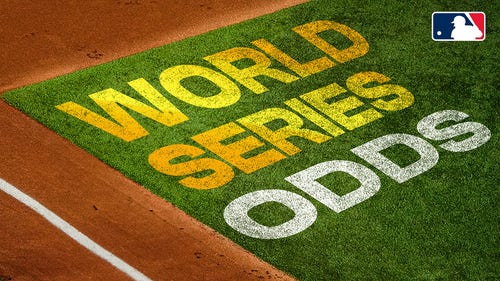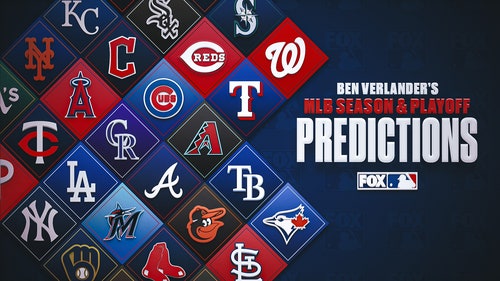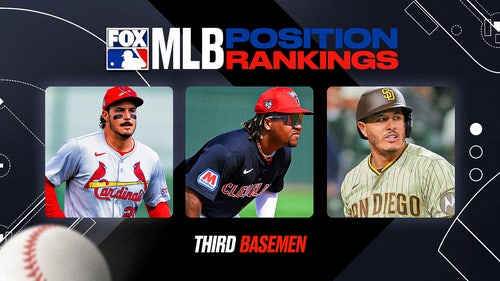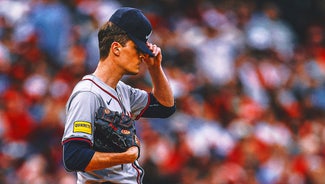
A Look At the College Prospects For the 2017 MLB Draft
Jun 23, 2015; Omaha, NE, USA; Vanderbilt Commodores left fielder Jeren Kendall (3) dives back to first base but is tagged out during the second inning against the Virginia Cavaliers in game two of the College World Series Finals at TD Ameritrade Park. Mandatory Credit: Steven Branscombe-USA TODAY Sports. MLB.
The 2017 MLB draft is getting plenty of discussion on baseball forums and social media. Who are the college guys to know, and what does the college class look like this year?
Our MLB coverage at Call to the Pen is fairly well-balanced, but in an effort to give you better breadth and depth of coverage of minor league baseball, we will begin a number of weekly posts.
The first will examine the big news items along with the top performers in the minor leagues each Monday. Tuesday will bring a review of the weekend highlight series. Wednesday will bring draft news and college baseball news until that is complete. Thursday will preview the weekend series of note in minor league baseball to watch. Friday will feature a new series, "The Video Room", where CTTP contributor Benjamin Chase will examine one game from the week from a scouting perspective and break down the game.
Scouting reports will be scattered throughout the week and weekends as well, so keep on the lookout for those as well. As always, if there is anything you would like to see covered more thoroughly here at CTTP, let us know in the comments section below!
Today, we will look at the college draft class for the 2017 MLB draft. With many places beginning to get more into mock drafts and into deeper scouting reports, the top rated prospects are coming out.
The 2017 college season has begun to sort out who will be the true MLB prospects and who will be the guys that may fall down in the draft.
Top Guys
The top of the crop is very thin, and likely even thinner if the guy whose video headlines this page, Brendan McKay is viewed as a pitcher instead of a first baseman. McKay would profile as a John Olerud type as a hitter, but many teams see a possible future starting pitcher from the left side, so if he does go as a pitcher, that really leaves things thin in the college crop.
Coming into the season, the player pictured at the cover of the post, Jeren Kendall of Vanderbilt was highly regarded as a possible #1 overall pick, but he's had an up and down season, especially in the one area of big concern for MLB clubs, his plate discipline.
The guy who could end up passing him as the first collegiate hitter picked is fellow outfielder Adam Haseley of Virginia, who also has some draft value as a left-handed pitcher. Haseley has been impressive this spring and is now viewed as a certain first-rounder and a possible top ten guy.
Catchers
If there is a spot to draft a college player where you'll get more value from a college player than a high school player, according to studies done in the past, it's collegiate catching.
This season opened with some solid catching options in J.J. Schwarz of Florida and Evan Skoug of Texas Christian, who were bat-first catchers that a team could view like Zack Collins of Miami was viewed in 2016, but neither has hit this season, and both are falling big on boards.
That has opened the door for Riley Adams of San Diego to jump up boards as a guy who stands 6'4″, which could lead to him moving off of catcher, but he's got a powerful arm and has shown some big improvements in his ability to move laterally this season behind the plate. He's also hitting very well this year, with a .318/.442/.612 line through 36 games with 10 home runs.
Matt Whatley of Oral Roberts is a guy with the ideal size at catcher and a history of hitting for excellent contact and a good eye at the plate. He showed good plate discipline at the plate in the Cape Cod League last summer as well.
Connor Wong of Houston was the best catcher in the Cape Cod League last summer, and he's continued to hit well this year for Houston. Wong has a background in the infield, which portends his raw scouting reports behind the plate, but he has a high ceiling defensively behind the plate as well.
Sean Murphy was a guy that popped onto a lot of radars last year out of Wright State, and Daulton Varsho is doing similar work out of Wisconsin-Milwaukee this season. Varsho has done nothing but hit for the last two seasons in the Horizon League, and he's graded well behind the plate as well.
K.J. Harrison of Oregon State may be this season's version of Matt Thaiss, a productive offensive catcher who ends up at first base once an MLB team gets their hands on him in order to help accelerate the bat. Harrison has had injury issues this season that have kept him at 1B or DH for much of the season, so that transition may have already begun.
Corner Infielders/DHs
Often corner infield college prospects are guys who have padded college stats without much MLB projection, but this year's class has some depth in legit prospects.
While the top of the class is not elite, outside of McKay if he's drafted as a first basemen, there is some solid depth at the corners.
Virginia's Pavin Smith is the one guy who will be considered in the top 15 of the draft outside of McKay, and he's put up the numbers to warrant that, with a .365/.435/.628 line. Smith projects less for big league power and more for contact, with a number of James Loney/Sean Casey comparisons floated his way by evaluators.
Missouri State's Jake Burger could jump up boards depending on who is giving the report. Burger is dinged for playing in a lower level, but his power is undeniable, and he's absolutely crushing balls this season. He's also been credited with doing some work this offseason on his defense that could lead to him staying at third long-term. If a team believes he'll hit for average as well as the power, they could really push him up their board.
Kentucky's 1B Evan White is a unique profile in that he throws left-handed but hits right-handed. His bat, though, is certainly notable. In the SEC this season, he's put up a .383/.478/.660 line.
While many in this year's class don't have "ideal" big masher size, that's not true of Wake Forest's 1B Gavin Sheets. He's listed at 6'5″ and 235 pounds, and his swing shows big time power, though he's been tagged with a bit of loop to his swing at times. He has powered out 13 home runs this season in the ACC.
Brent Rooker of Mississippi State has been playing a lot of DH this year, but he's played 1B and outfield in the past. What he's doing this year with the bat, however, is what has taken him from a likely 4th-7th round selection to a guy who very possibly could go in the top half of the first round. He's slashing .414/.516/.917 while leading the NCAA in home runs and the SEC in stolen bases with 16 and 15, respectively. The last guy to have a major season like that in the SEC was Andrew Benintendi, who shot up to a top pick due to his big final season with Arkansas.
Middle Infielders
Logan Warmoth had a very solid Cape Cod League before putting up a very nice season so far for North Carolina. He's a solid up the middle defender that should stick at short or second, and he has been gaining steam lately.
Keston Hiura of UC-Irvine receives a lot of Ian Happ comparisons, but much of that has to do with his working between second base and the outfield, though the considerable power also matches up well. Hiura was forced into a lot of DH due to a ligament tear in his elbow, so that could affect his draft slot depending on how it's healed.
Taylor Walls is known for his elite walk rate at Florida State. He's struggled this season, however, to do much other than walk after having a very solid 2016, so he could see his stock fall some, in spite of being a guy who can handle shortstop and still post a .411 OBP with a .250 BA.
Louisville's Devin Hairston may not stand out in any way offensively, but he's able to make good contact, even if he doesn't have elite power or speed. He does show a very solid glove at shortstop, and being able to make good contact and handle short could be enough to get Hairston in first round consideration.
Maryland's Kevin Smith has two major tools – an elite glove, and a big power bat. Those two tools have been on display this season as he's slugged .529 in spite of hitting just .245. That combination of glove work and power should get a bite fairly early in the draft.
Ernie Clement has been a solid flexible player for Virginia. He's been an infielder and outfielder in his career, though many feel he could handle second base. Clement is a guy with good contact and from the video I've seen so far, he looks to have a solid batting approach.
Outfielders
North Carolina's Brian Miller wasn't drafted out of high school, but he's shown himself to be a very competent leadoff hitter ever since, and he's hitting .314/.400/.481 with 15 stolen bases this year, with an even 22/22 BB/K ratio.
Each year, the Cape Cod League has darlings that end up being summer showcase flare ups that turn out to be one-time performers. It's looking like Lipscomb's Michael Gigliotti is one of those after a big Cape Cod League. Gigliotti has legit 70-80 grade speed, but he's hit .248/.421/.339 this season, flashing his big speed, but struggling to get on base outside of a walk.
Stuart Fairchild of Wake Forest has been showing a tremendous power/speed blend this season with double digit home runs and stolen bases while posting a .348/.443/.652 slash line in the ACC.
Mississippi State's Jake Mangum has been working both in the outfield and off the mound this season, but it's his bat that will get him drafted. Mangum has a solid profile as a leadoff hitter, leading the SEC in hitting in 2016 as a freshman.
While New Mexico's Luis Gonzalez hasn't really improved on his 2016 season, that's quite alright as he has slashed .358/.479/.563 this season, flashing power and speed and excellent strike zone control.
LSU's Greg Deichman has been a big power hitter throughout his career, but he's hitting the ball all over the field now, rather than just over the fence, as he's hit .340/.415/.655.
Top Guys
The biggest performer on the mound in the college season outside of Brendan McKay has been one of the smallest guys to take a collegiate mound in North Carolina's JB Bukauskas, who has dominated the ACC this season. Bukauskas has posted a 1.40 ERA and 0.81 WHIP this season while putting up a 15/81 BB/K line over 58 innings.
Florida's Alex Faedo and LSU's Alex Lange have more than their conference and first name in common as both are excellent pitchers that have a chance of hearing their names called in the first fifteen selections of the MLB draft. Faedo has posted a 2.47 ERA, 1.07 WHIP, and 20/77 BB/K over 65 2/3 innings while Lange's had a blow up start alter his ERA a bit to 3.27 with a 1.26 WHIP and a 17/69 BB/K over 52 1/3 innings.
There are a host of other starters that could put up a big finish to their 2017 seasons and move into the top of the first round, but we'll cover them more as we look at more pitchers in depth.
More from Call to the Pen
Right Handers
Coming into the season, Vanderbilt ace Kyle Wright was considered a possible 1-1 selection, but he's had some struggles this season. Wright is a guy who doesn't have elite raw stuff, but his pitchability is nearly unmatched in the college game, and he's performed better recently, which could lead to him being considered in the top 10-15 picks again.
Missouri's Tanner Houck has been really the same guy he's been for his first two years of college, which is not a terrible thing, but for those scouts hoping to see a step forward this season, he's really not offered that.
South Carolina's pair of Wil Crowe and Clarke Schmidt are both guys that could end up pushing their way into the top 10-15 picks. They both have elite stuff, but they've had struggle starts this season that have led their numbers to not look as elite as they should be.
Griffin Canning follows a long line of UCLA pitchers who slow-cook their way to draft stardom. He's got a very nice four-pitch mix, all that can flash above-average and three that flash plus. He's posted 78 strikeouts over 61 2/3 innings this season.
Tristan Beck of Stanford had shown excellent stuff in 2016, but he will very possibly miss the entire season due to a stress fracture in his back. How much time Beck misses could determine if he returns to Stanford for one more season to improve his draft stock, akin to Wil Crowe last year.
Oregon State's Jake Thompson missed much of his 2015 due to a back injury, and many worry about his future health due to this, but posting a 1.03 ERA and 0.89 WHIP in the Pac-12 with a 21/64 BB/K over 61 innings will definitely dissuade some of those concerns.
Central Florida Junior College's Nate Pearson has the 6'6″ big frame that would make you think he's going to come at you with high-90s stuff, but instead his fastball has hard sink and sits around 90.
Corbin Martin has worked out of the bullpen for Texas A&M, using his mid-90s fastball with excellent late movement, a very good change, and a breaking ball that can flash double-plus but is inconsistent. While not a triple digit guy, Martin is the type that could be a candidate to move from the bullpen to a starter as a pro with three good pitches, but he could move quickly as a reliever. Stanford's Colton Hock follows suit as far as relievers go, showing similar stuff and excellent results.
Left Handers
The talent with Seth Romero of Houston is undeniable, but his issues off the field have over-shadowed his immense talent. He's currently suspended indefinitely, and it's up in the air how this will affect his draft stock. He would be a top 10-15 guy without the off-field issues.
Junior college guys often are tough to project just because it's hard to measure their competition, but Brendon Little has been impressive with State Junior College of Florida this season a year after leaving North Carolina. Little used a dominating Cape Cod League to launch himself into consideration along with upper-90s stuff with mid-80s breaking stuff.
Ricky Tyler Thomas is a slight lefty from Fresno State that really turned a lot of heads last summer in Team USA work. He's on a poor Fresno State team that has not helped his case as seemingly every hit has fallen in with mediocre defense behind him, hurting his ERA this season, in spite of near dominant statistics otherwise.
In contrast to Thomas, David Peterson of Oregon is about as prototypical of a pitcher as you could ask for at 6'6 and 240ish pounds. Peterson's long limbs give his fastball and change unique movement, but also hinder his command as is a common issue with taller pitchers.
Peterson's in state rival, Luke Heimlich of Oregon State has really taken a step forward this season, and he seems to be getting stronger as the season progresses, the type of guy who could make a big name by the time the draft comes. He's posted a 0.83 ERA, 0.82 WHIP, and 14/70 BB/K over 65 innings on the season.
Daniel Tillo of Iowa Western Community College transferred from Kentucky to IWCC, and many thought it was in order to play basketball as well as baseball as he was a very high-level basketball player in high school. He has an excellent 3-pitch mix with a fastball that runs into the mid-90s. His 6'5″ frame does appear able to add well to his frame as well, so teams could dream a bit as well.
Xavier's Zac Lowther has been putting up video game numbers this season, striking out 71 hitters over 46 innings, and he's flashed two plus pitches in his short time.
We will have a look at the top high school players in the draft next week!










































































































































